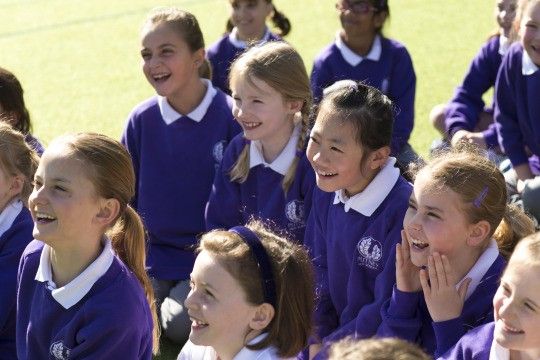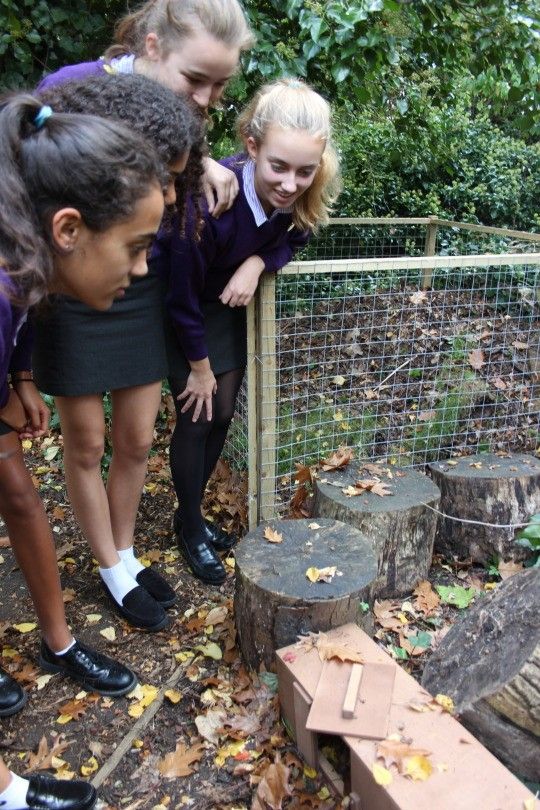Originally Posted on ISC Blog: 22 Jan 2018 by Suzie Longstaff
Suzie Longstaff, headmistress at Putney High School, argues that when it comes to mental and physical health the simple act of being outside, “in nature” can have a hugely beneficial impact on both adults and children.
As adults, many of us will have had the misfortune to spend the day in what seems like a hermetically sealed, artificially lit and climate controlled office. You know what it’s like; you enter a kind of twilight zone with little awareness of the passing phases of the day or the changing weather. The intention is to focus the mind, rather than expand it, and in most learning environments, particularly schools, it is no different. Shouldn’t schools be doing more to literally “broaden horizons” rather than confine them?
When it comes to mental and physical health, it has been proven that the simple act of being outside, “in nature” can have a hugely beneficial impact on both adults and children. Aside from the obvious benefits to fitness, the sounds of nature cause the release of “the happy hormone”, serotonin, and a healthy dose of fresh air and sunlight boost absorption of vitamin D, improve lung function and improve our vision. But what impact do these factors have on a human’s ability to learn?

It is no coincidence that the corporate world makes regular use of terms such as “blue sky thinking” and thinking “outside the box”. The value of having access to the sky and its power to stimulate expansive, creative thought processes are alluded to quite rightly. Perhaps it’s because underneath all our sophistications we are, after all, animals, and since our hunter gatherer forefathers first roamed the planet, we evolved to exist outside, in the natural world.
Anyone who recalls the childhood thrill of “making mud pies” won’t need scientists to champion the benefits of freeing the imagination in a fun and relaxed environment. Why else do multi-national companies spend fortunes on “team-building days” encouraging their employees to go wild paintballing or indulging in physical and even more mud-filled activities like the “Tough Mudder” challenge?
The benefits of outdoor learning have been known about for centuries. Picture the Ancient Greeks storytelling around the fire; their oral tradition of poetic verse passing epic tales down through centuries. They were obviously doing something right, or today, publishers of Homer’s Iliad and Odyssey would have very little to print.
In the 1980s, the endlessly progressive Scandinavians came up with a “Forest School” initiative for pre-school children, originally in answer to a shortage of indoor facilities. Happily, the benefit of outdoor learning has become more mainstream since then and is now widely implemented to inform the design and layout of many school buildings. As I write this, I am lucky enough to enjoy a beautiful view from the desk where I’m sitting: a green space with trees, flower beds, a nature trail and even an outdoor stage where pupils can perform their plays with the wind in their hair and a chorus of birdsong to accompany them.

The science really is there. In 2010, choir master, Gareth Malone’s Extraordinary School for Boys on BBC Two worked with an Essex Primary School to demonstrate the positive impact of taking boys who were falling behind in reading, out of the confines of their class. Children do learn more effectively, show better levels of concentration and are proven to be more relaxed when taken from the scheduled, frequently screen-based world of the classroom, into the natural world.
Fresh stimuli bring enormous benefits to creative thought processes – differences in lighting, layout, temperature and scenery can have hugely positive impacts on the brain’s ability to assimilate information, to retain lessons and to learn. But how can schools implement this during an average day of lessons? Science and geography are obvious candidates, but it should go wider than that. One primary school I know brought history lessons thrillingly to life burying “artefacts” in the mud for children to “unearth”, just like real archaeologists. At Putney High School GDST, we take every opportunity to take lessons outside, portable technology like iPads, making matters so much easier. Our Outdoor Challenge week saw everything from science experiments on the lawn, to large scale drawing on the netball courts, scavenger plant hunts, bluebell planting and even an outdoor dance class.
Learning should be thrilling, and there is adventure to be had in the natural world. Risk taking, problem-solving and co-operating with classmates away from the relative safety of a carpeted classroom world, are valuable confidence builders for young people. Learning both in and from nature offers both teachers and their students a new and fresh perspective and leads to greater sensitivity to their own wellbeing and their position in the world.
So let’s do more than throwing open the windows – let’s zip up our jackets, pull on our boots and let the learning begin!
